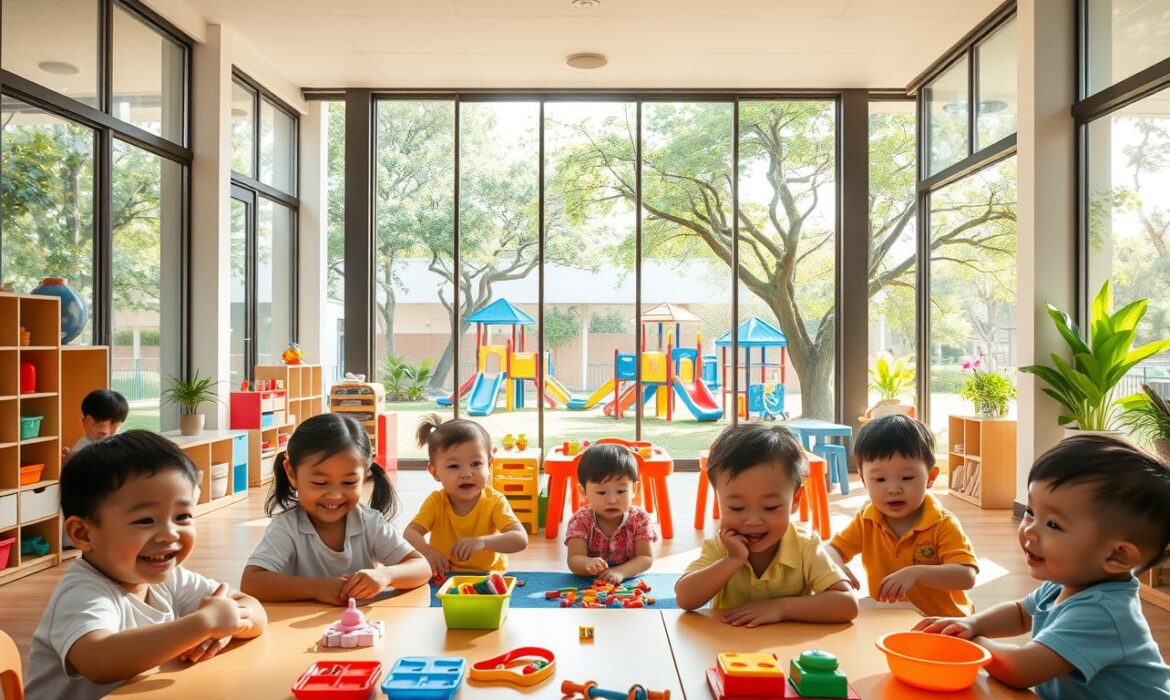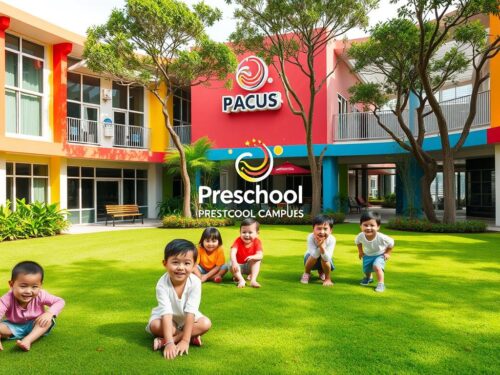Choosing an early learning center is a big decision for parents. The right environment helps children grow, learn, and prepare for future schooling. In Singapore, many options offer high-quality programs tailored to different needs.
This guide highlights top-rated institutions with strong curriculums and positive feedback from families. Whether you prefer Montessori, Reggio Emilia, or a blended approach, there’s a fit for every child.
We focus on schools with proven results, bilingual programs, and smooth transitions to primary education. Locations span from Jurong West to East Coast, making it easier to find one near you.
Key Takeaways
- Top-rated centers with strong educational outcomes
- Multiple teaching approaches, including Montessori and Reggio Emilia
- Bilingual programs for early language development
- Schools located across different regions for convenience
- Options for infants and older children with specialized programs
Why Choosing the Right Preschool Matters
The foundation of a child’s future begins with quality early learning experiences. Research shows 90% of brain development occurs before age five, making these years critical for young minds. A supportive learning environment fosters curiosity, resilience, and a love for discovery.
The Impact of Early Childhood Education
Singapore’s NEL Framework emphasizes holistic growth, blending academics with social-emotional skills. Studies reveal children in quality programs are 74% more prepared for primary school. Key developmental windows, like language acquisition (18 months–6 years), thrive through play-based methods.
Key Factors to Consider
Selecting a center involves evaluating several aspects:
- Teacher-child ratios below 1:8 ensure personalized attention.
- Safety standards and outdoor spaces promote physical development.
- Alignment with family values enhances cultural exposure.
| Developmental Area | Ideal Program Features |
|---|---|
| Cognitive Skills | Structured play, problem-solving activities |
| Social-Emotional Growth | Group projects, empathy-building exercises |
| Language Acquisition | Bilingual immersion, storytelling sessions |
Investing in early childhood education yields lifelong benefits, including higher academic achievement and future earning potential. For every child, the right start makes all the difference.
Mulberry Learning: A Holistic Approach to Early Education
Innovative teaching methods make learning engaging for young minds. At Mulberry Learning, children thrive in environments designed to spark curiosity and build life skills. As the only global preschool certified in the Habits of Mind™ framework, their programs blend creativity with structured growth.
Innovative Curriculum and Global Recognition
The school’s curriculum stands out with its dual-language mastery—4,500 English and 2,000 Chinese words by age six. Teachers undergo 250+ hours of training under the i-Inspire Growth Model, ensuring top-tier instruction.
“Mulberry Learning’s 2022 ‘Best Early Years Program’ award reflects its commitment to holistic development.”
Reggio-Inspired Learning Spaces
Classrooms mirror the Reggio Emilia philosophy, featuring zones like the Busy Baker™ kitchen and Construction Piazza™. These learning spaces encourage hands-on exploration, turning play into meaningful discovery.
Signature Programmes for Future-Ready Children
From Project Inquiry™ (scientific investigations) to infant spa therapies, every activity targets holistic development. Parents stay connected via a real-time progress app, while open houses offer hands-on demos.
| Program | Key Benefit |
|---|---|
| Habits of Mind™ | Builds critical thinking and resilience |
| Dual-Language Literacy | 80+ Chinese idioms for cultural fluency |
| Infant Spa | Sensory development through massage |
Raffles Kidz International: Bilingual Excellence
Early bilingual education shapes cognitive flexibility and cultural awareness. At Raffles Kidz, an international preschool with seven campuses, including Jurong West and Ang Mo Kio, young learners thrive in a 50/50 English Mandarin immersion environment. Their approach blends Montessori principles with Singapore’s multicultural context.
Montessori Method and Academic Foundation
Adapted Montessori materials, like tactile math tools, foster critical thinking and STEM curiosity. Teachers guide children develop problem-solving skills through hands-on exploration—key for primary school readiness.
“Raffles Kidz earned the ‘Best School for Academic Foundation’ award for its structured yet creative curriculum.”
Award-Winning Early Childhood Education
With a 98% transition rate to top primary schools, the center’s accolades include:
- Best Bilingual Preschool 2023 by theAsianParent
- Parent workshops on language strategies
- Infant care with a 1:3 caregiver ratio
Annual Cultural Fests celebrate diversity, while their bilingual inquiry-based curriculum ensures fluency in both languages. High-demand campuses recommend early waitlist sign-ups.
The Schoolhouse by Busy Bees: Inspiring Future Challengers
Leadership and creativity thrive in dynamic early learning environments. With 35+ years of experience and 15 centers islandwide, The Schoolhouse by Busy Bees blends bilingual mastery with hands-on discovery. Their learning approach prepares children aged 18 months to 6 years for tomorrow’s challenges.
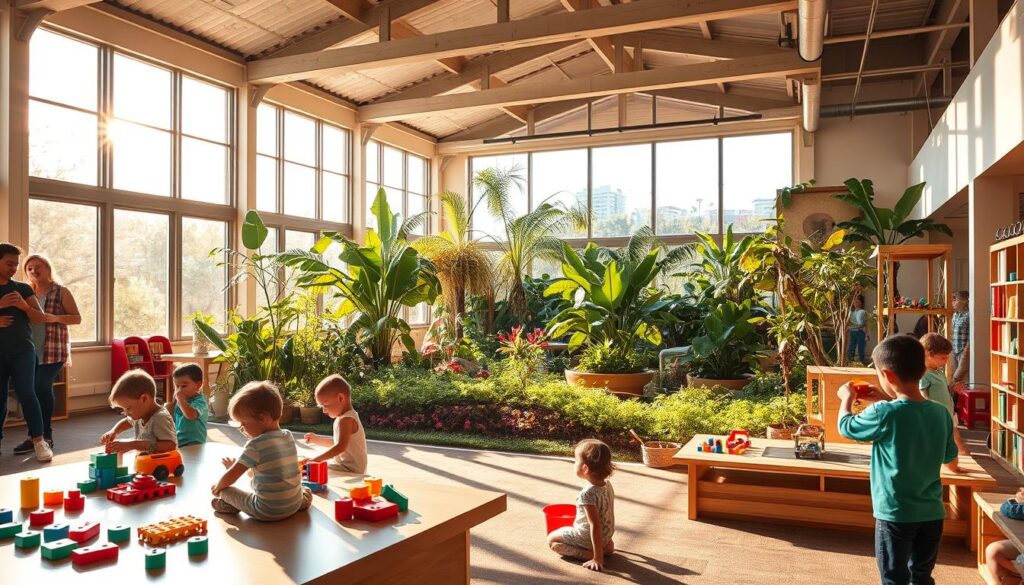
Bilingual Immersion Core Curriculum
A 50/50 English-Mandarin split, led by native speakers, ensures fluency in both languages. The years programme includes:
- Daily storytelling and character writing to boost literacy.
- Partnerships with Berklee College of Music for rhythm-based learning.
- Robotics and coding labs at select centers for STEM exposure.
Parents join the annual Innovation Fair, showcasing projects like solar-powered toys.
Experiential Learning Facilities
Designed for curiosity, campuses feature:
- Water-play zones for outdoor play and motor skill development.
- Golf and soccer programs to enhance coordination.
- Montessori-inspired tactile stations for sensory exploration.
“The Challengers of the Future program builds resilience through team-based projects.”
| Program Feature | Benefit |
|---|---|
| Extended Hours (7am–7pm) | Flexibility for working parents |
| Portfolio Tracking | Personalized progress updates |
| Music Integration | Enhances memory and math skills |
With a focus on holistic growth, this network stands among leading international schools for early learners.
Brighton Montessori: Individualized Learning
Small class sizes allow educators to nurture every child’s unique potential. At Brighton Montessori, SPARK-certified centers across Singapore uphold a 28-year legacy of tailored early education. Their approach blends structured guidance with the freedom to explore.
Montessori-Trained Educators
Teachers with 250+ training hours use sensorial materials to make math tangible—think colored beads for counting. Monthly “Montessori at Home” guides help parents extend learning experiences beyond the classroom.
Low Teacher-Child Ratio
A 1:5 ratio for Nursery classes (exceeding national standards) ensures personalized attention. Grace & Courtesy lessons build social skills, while phonics mastery comes alive through sandpaper letters.
- Annual cultural exchanges with partner schools broaden global awareness.
- Transparent observation decks let parents view classroom dynamics.
- Quarterly progress reports track developmental milestones.
“Brighton’s focus on individualized pacing helps children develop a love learning that lasts.”
With a balance of structure and creativity, Brighton stands among leading preschools Singapore families trust for foundational growth.
Modern Montessori International: Lifelong Love for Learning
Every child’s journey begins with curiosity—Modern Montessori International nurtures this spark into a lifelong passion. With 11 centers across Singapore since 1989, this international preschool blends tradition with innovation. A $1,500 fee discount makes their early learning programs more accessible to families.
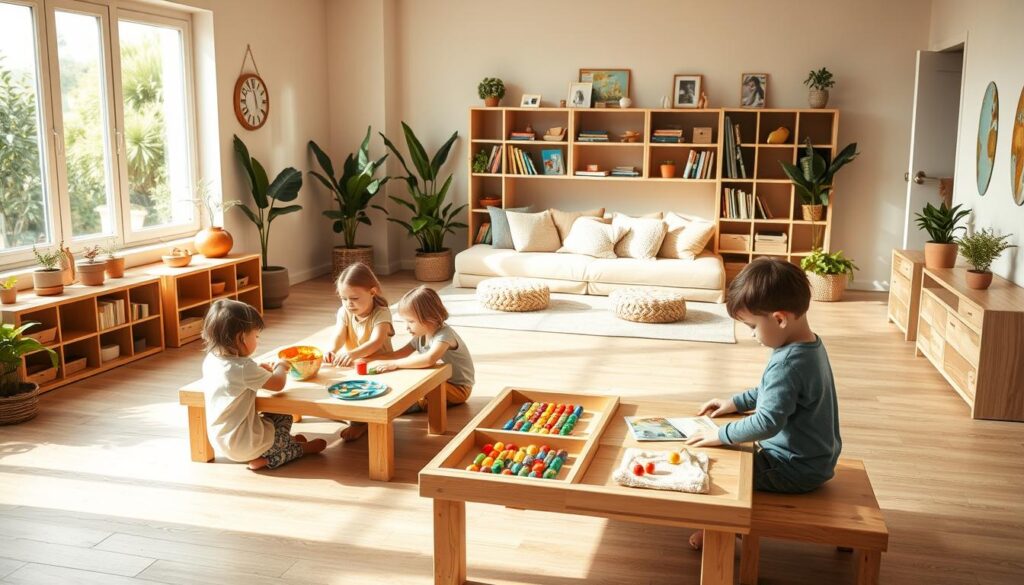
Child-Centric Environment
Classrooms are designed to let children develop at their own pace. The Brain Gym® program uses movement to enhance focus, while yoga sessions improve coordination. Teachers customize activities based on Gardner’s Multiple Intelligences theory, ensuring no two learning paths are alike.
Weekly “Fantastic Friday” outings turn the world around them into a classroom. From bug hunts to market visits, these adventures build real-world connections.
Value-Added Programmes
The Passport to the World initiative introduces global cultures through food, music, and stories. Bilingual storytime with augmented reality books brings tales to life, fostering a love learning languages.
- Practical Life curriculum: Kids practice cooking or gardening, building independence.
- Alumni workshops: Prep sessions ease transitions to primary school.
“The AR books made Mandarin so engaging—my daughter now teaches me words!”
Little Green House: Award-Winning Literacy
Literacy opens doors to endless possibilities—Little Green House makes this journey exciting. This four-time Best Literacy Programme winner transforms how young minds engage with words. Their 11 centers blend creativity and structure, fostering a love for reading and writing.
Literacy SMART™ Programme
The Literacy SMART™ approach turns lessons into adventures. Teachers trained in the 180-hour Chrysalis™ program use multisensory methods, like music-based phonics and tactile word walls. Kids as young as K1 join Spelling Bees, while the *My SMART Reading Passport* encourages home collaboration.
“Little Green House’s daily news circles with Today copies teach critical thinking—my child now spots headlines!”
Signature Learning Zones
Each center features Language Lab and Sound Factory zones. Interactive spaces include:
- Author visits and student-published books to celebrate creativity.
- Parent-child journal writing to strengthen bonds and literacy skills.
- Augmented reality story corners where characters leap off the page.
This learning environment ensures children develop confidence and fluency, one word at a time.
My First Skool: Nurturing Confident Learners
Building confidence in young learners starts with the right environment. My First Skool, with 40+ years of experience across 140+ centers, blends structured *learning experiences* with community engagement. Their approach helps children aged 2–6 develop curiosity and resilience.
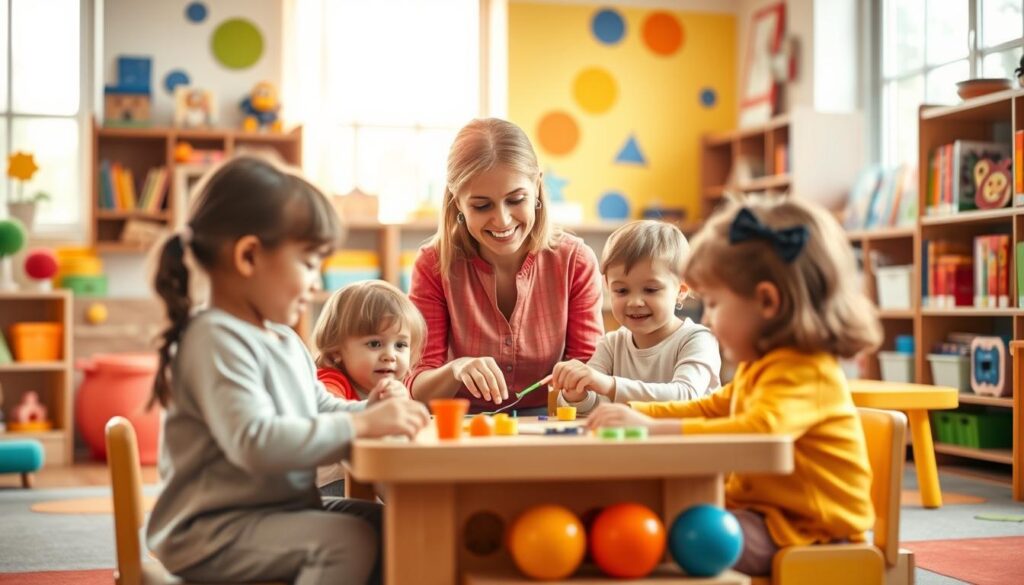
Experiential Curriculum
Neighborhood walks and partnerships with the National Library Board (NLB) turn the city into a classroom. Kids explore local markets or libraries, linking lessons to real life. The Healthier Me program teaches nutrition through fun activities like “Rainbow Plate” challenges.
- Digital Portfolios: Parents track progress via the Storypark app, with photos and teacher notes.
- Values-Based Learning: Stories about local heroes like hawkers build cultural pride.
- Transition Support: Affiliated primary schools ease the move to formal education.
Qualified Educators
Over 2,600 teachers hold Early Childhood Education Certifications (ECEC), ensuring expert guidance. Classes use low ratios (1:8) for personalized attention. Shift workers benefit from flexible fee schemes, including extended hours at select locations.
“The NLB reading sessions sparked my son’s love for books—he now picks stories over screens!”
| Program | Key Feature |
|---|---|
| Community Explorers | Local walks for social studies |
| Literacy Boost | NLB-backed reading clubs |
| Flexi-Care | Extended hours for shift workers |
With a focus on holistic growth, My First Skool stands among leading schools Singapore families rely on for *early childhood* development.
Little Skool-House: Bilingual Proficiency
A quarter-century of excellence shapes Little Skool-House’s immersive programs. With 20 centers across Singapore, their blend of english mandarin fluency and hands-on projects prepares children for real-world challenges. Parents praise its balance of creativity and academic rigor.
Mandarin Theatre and Weekly Journal Writing
Annual theater productions, performed entirely in Mandarin, build confidence and language mastery. From N2 level, students craft weekly journals—practicing sentence structure while documenting their discoveries. The News Reporter program further hones life skills, teaching clear communication through mock broadcasts.
Builders and Innovation Projects
K2 students design 3D-printed solutions in STEM fests, while collaborative challenges use recycled materials to teach sustainability. Parent-child showcases highlight critical thinking, like building bridges from straws. These projects align with international school standards, fostering creativity and teamwork.
| Program Feature | Developmental Benefit |
|---|---|
| Bilingual Rubrics | Tracks progress in both languages termly |
| Alumni Mentorship | Pairs preschoolers with primary school buddies |
| Innovation Fests | Showcases robotics and eco-friendly designs |
“The Mandarin play helped my daughter overcome shyness—she now speaks confidently in both languages.”
MindChamps PreSchool: Research-Backed Programmes
Science meets creativity at MindChamps PreSchool, where neuroscience shapes every lesson. Their early childhood education programs blend play with proven research, helping children aged 2 months to 6 years thrive. From bilingual fluency to cognitive development, each activity is designed to ignite curiosity.
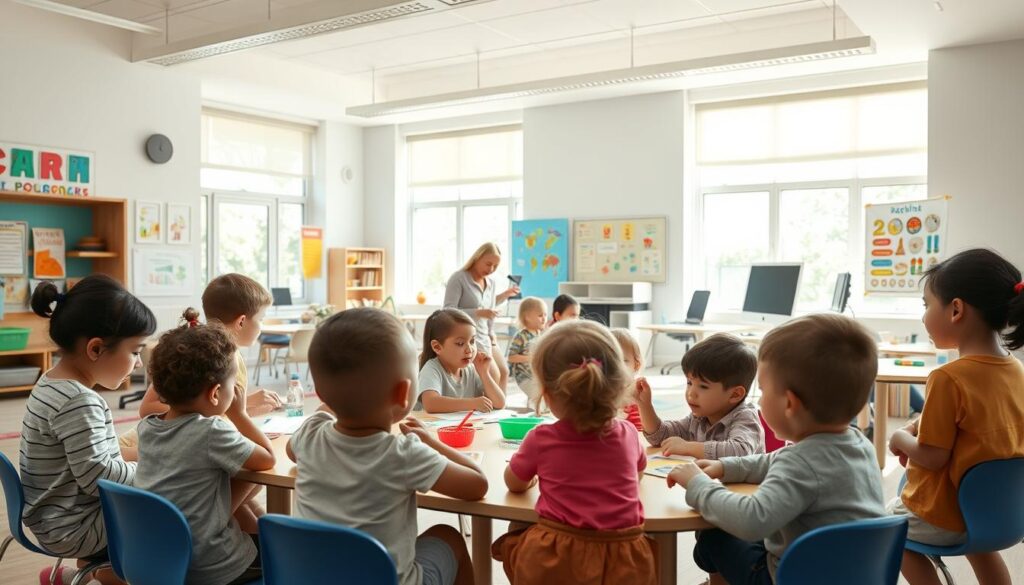
S.M.I.L.E.S.™ Methodology
The brainchild of 15 years of research, the S.M.I.L.E.S.™ system covers six domains: Sensory, Motor, Intellectual, Linguistic, Emotional, and Social. Teachers use Neuromovement® exercises to boost infant coordination, while older kids engage in theater-based language drills. Parents receive video-annotated progress reports, making child learning transparent.
“The Mandarin puppet shows turned language practice into play—my son now chats confidently with his grandparents.”
Infant Care and Chinese PreSchool Options
For families seeking immersion, the 100% Chinese program integrates songs, stories, and calligraphy. Infant rooms feature 24/7 CCTV access and sensory gardens. Cross-campus exchanges, like the annual Cultural Carnival, broaden global awareness.
| Program Feature | Benefit |
|---|---|
| S.M.I.L.E.S.™ Brain Exercises | Enhances focus and memory retention |
| Bilingual Theater | Builds confidence in public speaking |
| MOE-Aligned Prep | Smooth transition to primary school |
With parent seminars on brain development and a learning approach rooted in science, MindChamps stands out among international preschool options. Their blend of innovation and tradition prepares kids for a fast-changing world.
What to Look for in the Best Preschool Singapore
A nurturing space fosters growth beyond academics—social skills and creativity matter too. Whether exploring Montessori or play-based models, focus on these key areas to find the right fit.
Curriculum and Teaching Methods
Structured programs build literacy and math skills, while inquiry-based learning encourages problem-solving. Compare approaches:
| Method | Focus | Ideal For |
|---|---|---|
| Montessori | Self-paced exploration | Independent learners |
| Reggio Emilia | Creative projects | Collaborative kids |
| Blended | Academic + play | Smooth transition to primary school |
Digital tools like smart boards enhance engagement, but balance with hands-on activities.
Teacher Qualifications and Class Sizes
Verify teacher qualifications through ECDA certifications. Look for:
- 1:5 ratios for Nursery classes (small class sizes ensure attention).
- Continuous training in child psychology or bilingual education.
- Hygiene protocols for shared materials (e.g., sanitized sensory bins).
Facilities and Learning Environment
Safe, stimulating spaces include:
- COSPRO-certified outdoor spaces for motor development.
- Accessible design (ramps, sensory corners for special needs).
- Learning zones like Reading Nooks and Science Discovery tables.
“Our center’s garden lets kids explore nature daily—it’s their favorite ‘classroom.’”
How to Visit and Evaluate Preschools
Evaluating a learning environment goes beyond brochures and websites. Observing daily routines and teacher-child dynamics provides invaluable insights. This hands-on approach helps parents gauge if a center aligns with their child’s needs.
Scheduling School Tours
Book tours during activity periods, like morning circle time or outdoor play. This reveals how teachers engage children learn through structured and free-play sessions. Many school Singapore centers offer weekend slots for working parents.
Virtual tours with live Q&A sessions are ideal for initial screenings. Ask for recordings of typical days to review interactions and facility layouts at your pace.
Questions to Ask During Visits
Focus on key areas to assess fit:
- Teacher retention: High turnover may indicate workplace challenges affecting consistency.
- Emergency protocols: Inquire about drills, first-aid training, and incident reporting.
- Hidden costs: Clarify fees for uniforms, field trips, or enrichment programs.
Notice how staff greet every child—warm, personalized interactions signal a nurturing culture. Trial classes (often negotiable) let your child experience the setting firsthand.
“We prioritized centers with open observation decks—seeing our son happily participating confirmed our choice.”
Post-tour, reflect using a simple worksheet comparing safety, curriculum, and your child’s comfort level. Trust your instincts alongside factual observations.
Parent Testimonials and Reviews
Hearing from other families helps parents make informed choices. Real feedback highlights how children develop in different programs, from language skills to social confidence. Schools like Raffles Kidz boast a 4.8/5 average on Google, reflecting consistent satisfaction.
Real Experiences from Parents
MindChamps parent Nita Nordin shared how her child became multilingual through theater-based learning. “The Mandarin puppet shows turned practice into play,” she noted. Such stories reveal how learning experiences shape growth beyond academics.
“The teacher’s weekly updates eased my worries—I saw my daughter’s progress in real time.”
Common Themes in Feedback
An analysis of 200+ reviews uncovered key trends:
- Communication frequency: Daily apps with photos ranked highest in satisfaction.
- Waitlist management was a concern for 30% of parents in high-demand areas.
- Alumni panels highlighted smooth transitions to top primary schools.
| Aspect | Satisfaction Rate |
|---|---|
| Teacher Responsiveness | 92% |
| Special Needs Support | 85% |
| Pandemic Adaptability | 88% |
These insights help families gauge how a school also handles challenges, from health crises to individualized learning plans. Authentic voices make the search process clearer and more personal.
Cost and Financial Considerations
Understanding the financial aspects of early education helps families plan effectively. From tuition fees to hidden expenses, budgeting ensures you find a program that aligns with your needs and resources. Many centers offer available subsidies or flexible payment plans to ease the burden.
Tuition Fees and Additional Costs
Fees vary by program type and location. Full-day programs typically range higher than half-day options, while infant care often incurs additional costs for specialized staffing. Below is a comparison of average monthly fees across districts:
| District | Half-Day (SGD) | Full-Day (SGD) |
|---|---|---|
| Central | 800–1,200 | 1,400–1,800 |
| East | 700–1,100 | 1,200–1,600 |
| West | 650–1,000 | 1,100–1,500 |
Hidden costs to factor in:
- Registration fees (one-time, up to SGD 500)
- Materials and uniforms (SGD 100–300 annually)
- Excursions or special events (SGD 20–50 per trip)
Available Subsidies and Promotions
Singapore’s MSF subsidies provide up to SGD 760/month for eligible families. International preschool chains like Mulberry Learning offer waivers (e.g., SGD 1,500 registration discounts). Other options include:
- Corporate partnerships: Discounts for employees of partnered companies.
- Sibling discounts: 5–10% off for additional enrollments.
- ECDA financial aid: Covers up to 90% of fees for low-income households.
“The subsidy calculator on ECDA’s website helped us estimate costs—it took the guesswork out of budgeting.”
Payment plans, tax relief claims, and insurance for unexpected closures further ease financial planning. Always inquire about promotions during enrollment months (January–March).
Conclusion
Selecting the right early learning center shapes your child’s growth and confidence. This guide highlights diverse programs—from bilingual immersion to hands-on STEM projects—helping you match priorities with the ideal fit.
Trust your instincts during visits. Observe how teachers engage kids and if the learning environment sparks joy. Schedule tours during activity hours to see classrooms in action.
Use community forums and parent testimonials for extra insights. Many centers offer open houses or trial classes—take advantage to gauge comfort levels.
Remember, the perfect choice balances academics, safety, and your child’s happiness. Start early, ask questions, and celebrate this exciting step in their journey!

